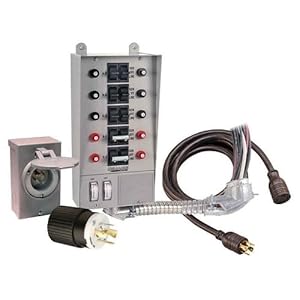NFPA 110 Generator Testing: An Overview
The National Fire Protection Association (NFPA) creates minimum standards for fire safety egress safety, and other types of safety in commercial buildings. Included in the NFPA's safety standards is a code for testing and maintaining emergency power Supply systems (EPSS): NFPA 110. If your building contains a generator, practicing the code can ensure that it performs as expected during a power ouTAGe. Below are the basic testing requireMents for industrial generators according to NFPA 110. For a full list of requireMents, building managers should contact the NFPA, or a commercial power solutions provider.
NFPA 110 Generator Testing: An Overview
NFPA 110 Generator Testing: An Overview
NFPA 110 Generator Testing: An Overview
NFPA 110 Generator Testing: An Overview
NFPAtesting for industrial generators
If a building is required to have a Level 1 or Level 2 generator, thefollowing types of NFPA 110 generator testing should be performed in preparation for a power ouTAGe. Experts trained in EPSS technology should carry out these tests.
Section 8.4.2
An EPSS must be exercised under load once a month for at least thirty minutes. The test should be conducted using one of the following two methods:
Loading that achieves a minimum temperature for exhaust gas based on the manufacturer's recommendations. Under normal operating temperatures while running at a minimum of 30% of the nameplate Kw rating.
For generators that cannot operate until their water pressure and oil pressure have stabilized, the tests above should be terminated before the thirty minutes expire. This reduces the time to> generator is unavailable for operation.
Section 8.2.4.3
Diesel powered generators that do not meet the requirements set forth in Section 8.4.2 should be exercised monthly for at least thirty minutes using the available EPSS load, and yearly for two hours using a supplied load. For yearly tests, the two hours should be broken down as follows:
30 minutes at 25% of the nameplate Kw rating. 30 minutes at 50% of the nameplate Kw rating. 60 minutes at 75% of the nameplate Kw rating.
To load bank can provide the "supplied load" required for tests under Section 8.2.4.3. Load banks, as well as diesel-powered generators, are available for short-term and long-term rental from commercial power solutionproviders.
The scope and benefits of NFPA EPSS testing
The requirements above are not a complete list of NFPA 110 generator testing requirements. To determine the necessary maintenance measures and tests needed for your unique generator, consult the code in its enTirety. By following its requirements, the following benefits can be realized:
Improved reliability of emergency backup lighting. Reduced possibility of electricity interruption in critical facilities. Reduced layover time at break before make generators. Improved emergency power generation capacity.
NFPA 110 Generator Testing: An Overview
No comments:
Post a Comment